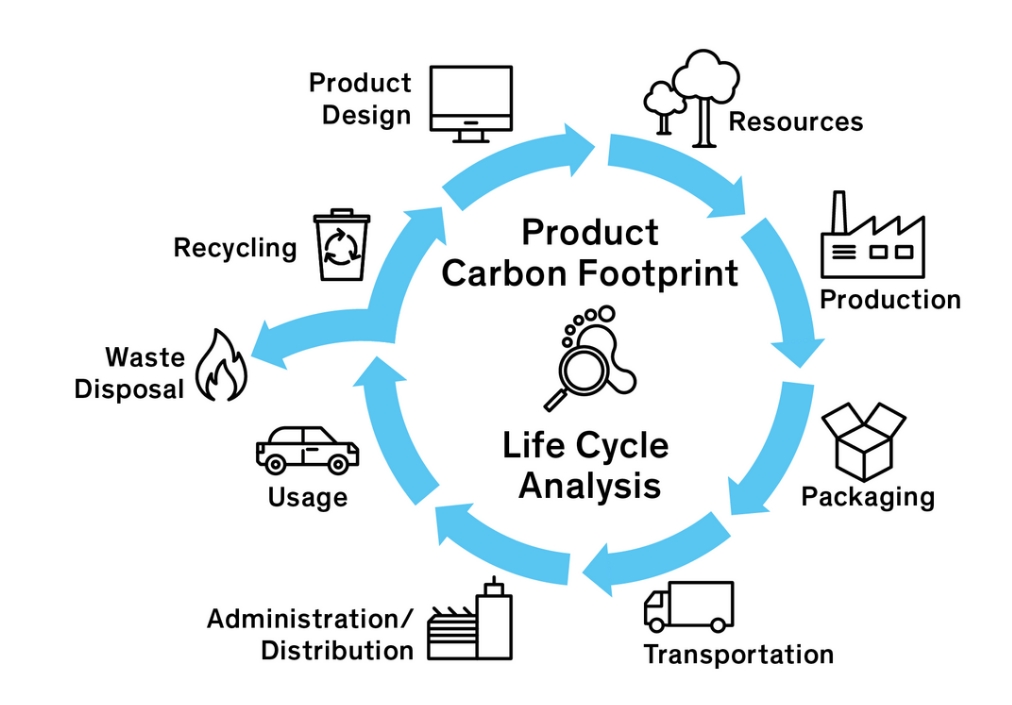Introduction
Sustainability has become a key focus for industries worldwide as concerns about environmental impact and climate change rise. Two pivotal concepts have emerged in this discourse: Life Cycle Assessment (LCA) and carbon credits. These concepts, however, need structured frameworks to be practically applied and universally understood. This is where the ISO 14040/44 standards come into play. These standards offer an internationally recognized methodology for conducting LCAs, thus ensuring transparency, accuracy, and consistency. By embedding the ISO 14040/44 framework within LCA practices, industries can better measure environmental impacts, which is crucial for the effective application of carbon credits in offsetting greenhouse gas (GHG) emissions.
Understanding ISO 14040 and ISO 14044
ISO 14040 and ISO 14044 are part of a series of standards that provide guidelines and requirements for performing Life Cycle Assessments.
- ISO 14040:2006 defines the principles and framework of LCA, providing an overall methodology for conducting life cycle assessments. It ensures that practitioners approach LCA in a consistent manner, covering all aspects from the goal and scope definition to interpretation of results.
- ISO 14044:2006 expands upon ISO 14040, providing detailed requirements and guidelines for conducting LCAs. It covers key elements such as life cycle inventory (LCI) analysis, life cycle impact assessment (LCIA), and interpretation phases. ISO 14044 ensures the proper execution of an LCA, focusing on specific methodologies and reporting structures to maintain consistency and reliability.
Together, these standards form the backbone of any legitimate LCA study, which is fundamental for evaluating environmental impacts, including GHG emissions, across the life cycle of products, processes, and services.
Life Cycle Assessment (LCA) and ISO Standards
Life Cycle Assessment is a methodology used to assess the environmental impacts of products, processes, or services over their entire life cycle, from raw material extraction (cradle) to disposal or recycling (grave). It evaluates several impact categories such as energy use, resource depletion, water consumption, and emissions, with GHG emissions being a critical focus due to climate change concerns.
LCA consists of four stages as outlined by ISO 14040/44:
- Goal and Scope Definition: Establishing the purpose, boundaries, and details of the assessment.
- Life Cycle Inventory (LCI): Gathering data on all the inputs (e.g., energy, water, materials) and outputs (e.g., emissions, waste) involved in the system.
- Life Cycle Impact Assessment (LCIA): Quantifying the environmental impacts associated with the inputs and outputs identified in the LCI.
- Interpretation: Analyzing and evaluating the results to make informed decisions or recommendations.
ISO 14040/44 provides a standardized approach to each of these stages, ensuring LCAs are conducted systematically, transparently, and can be replicated or compared.
Carbon Credits and Their Link to LCA
Carbon credits are certificates representing the reduction or removal of one metric ton of carbon dioxide or its equivalent in other GHGs. They are commonly used in carbon trading schemes or offset programs, allowing businesses to meet emission reduction targets or claim carbon neutrality. Carbon credits are a mechanism to combat climate change by providing financial incentives for reducing emissions.
For carbon credits to be effective and credible, their underlying emission reductions must be quantifiable, verifiable, and permanent. This is where LCA, guided by ISO 14040/44, plays a crucial role. By conducting a comprehensive LCA, companies can accurately quantify the GHG emissions associated with their products or processes, allowing them to:
- Assess their carbon footprint over the entire life cycle.
- Identify hotspots where emissions are concentrated, providing insights into areas for improvement or emission reductions.
- Generate carbon credits by implementing emission reduction strategies or technologies validated through an LCA.
ISO 14040/44 and Carbon Credit Validation
To participate in carbon markets or offset programs, organizations need to prove that their emission reductions are real, measurable, and additional (i.e., beyond what would have happened without the project). ISO 14040/44 provides a framework that enhances the credibility of these claims in several ways:
- Data Transparency and Accuracy: The structured approach ensures that the LCA provides a clear, transparent, and accurate account of the environmental impacts, including GHG emissions.
- Comparability: Standardized LCAs allow for comparisons between products or processes, aiding in the validation of carbon credit projects by offering a consistent methodology across sectors.
- Documentation and Reporting: ISO 14044 specifies the reporting requirements, ensuring that LCA results are well-documented, traceable, and reproducible. This is essential for verifying emission reductions and generating carbon credits.
- Verification and Certification: Many carbon offset schemes require third-party verification of emission reductions. The use of an ISO-compliant LCA enhances the verifiability of these reductions, as the methodology is universally accepted and trusted.
Challenges and Limitations
While ISO 14040/44 provides a robust framework for conducting LCAs, challenges remain in the context of carbon credits:
- Complexity of Data Collection: Gathering accurate life cycle data can be resource-intensive and complex, especially for global supply chains.
- Dynamic Nature of Carbon Markets: Carbon credit markets are constantly evolving, and the methodologies for validating credits may change, requiring LCA practitioners to stay updated on market requirements.
- Allocation and Boundaries: Establishing system boundaries and allocating emissions in multi-product systems can be challenging and may influence the results of the LCA, potentially impacting the generation of carbon credits.
Conclusion
ISO 14040 and ISO 14044 play a critical role in ensuring the integrity of Life Cycle Assessments, providing the necessary structure and guidance for evaluating the environmental impacts of products and processes. In the context of carbon credits, these standards help quantify GHG emissions, validate emission reduction efforts, and enhance the credibility of carbon offset programs. As industries continue to seek ways to mitigate their environmental impact, the integration of ISO 14040/44 into LCA practices will remain essential in supporting global sustainability goals, particularly in carbon management and climate change mitigation efforts.
Image Source: MyClimate.org




Leave a Reply